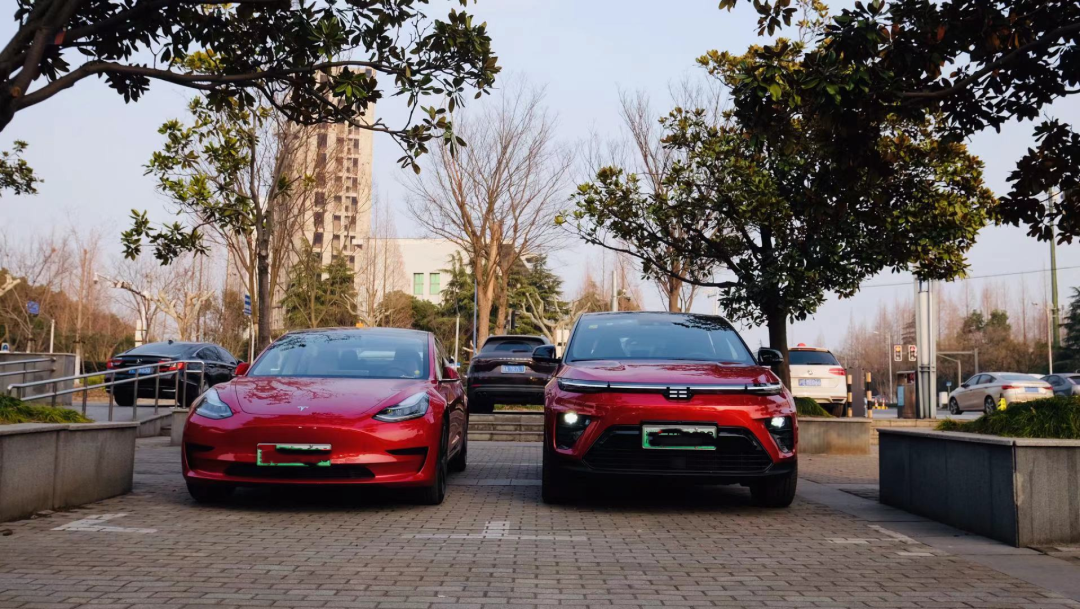Author: Feng Jingang
Before the Chinese New Year, I borrowed a ME5 from Skyline Automotive for a few days, and now that it’s available, I’d like to talk about this car.
In recent years, with the promotion of Ideal One, the extended-range market has emerged rapidly, and products such as Seres SF5, Lynk & Co Zero, Nissan Sylphy e-Power, Skyline ME5, WM Motor EX5, and VOYAH EV6 have emerged successively. Even NV and Changan C385 also want to try, and the extended-range market has undoubtedly become an important part of the automotive market.
Moreover, from the good sales of Ideal ONE, Lynk & Co Zero, and the strong demand for WENJIE M7, the outside world generally recognized the overall performance of extended-range electric vehicles, which exceeded expectations.
As for Skyline ME5, although it has been on the market since last year, due to limited factory production capacity and chip supply issues, it has not been able to show itself to the outside world, and many people do not know about it. According to a source from “Electric Force”, with the increasing resolution of production capacity and chip problems, Skyline ME5 will be introduced to the public more frequently.
If you have read my reviews of smart electric vehicles, you should know that I rarely praise a car, but from my experience over those few days, ME5 is indeed impressive in terms of product strength, driving control, energy efficiency and intelligence, and it is almost impeccable. The last new energy vehicle that impressed me so much was Ideal ONE…
Combined with the price of 149,900 yuan to 159,900 yuan, I think for most users, Skyline ME5 is the best choice for a 150,000-yuan smart electric vehicle, with no range anxiety, high energy efficiency, easy-to-use intelligent driving assistance, and outstanding appearance, it does not have any obvious shortcomings.
Especially compared to other 150,000-yuan smart electric vehicles from new energy automakers, including Xpeng G3i, WM EX5, and NIO UPRO, ME5 overall has a better endurance limit and product completion. Of course, if you only use it for urban commuting and do not have long-distance requirements, the latter few models are also good choices.
The following is the main part of the ME5 test drive report, provided for your reference.
Appearance
Among new energy automakers, I think Skyline Automotive’s styling design, from ME7 to ME5, is in line with the mainstream, not particularly stunning, but not bad either. It is generally moderate, reflecting a design philosophy of not pursuing excellence but avoiding flaws.
According to official introductions, the Skyline ME5’s body shape was personally designed by the main designer of Porsche 911&918, and the design language is “Pioneer Reconstruction Aesthetics.” Indeed, the design of smart electric vehicles does need a reconstruction.
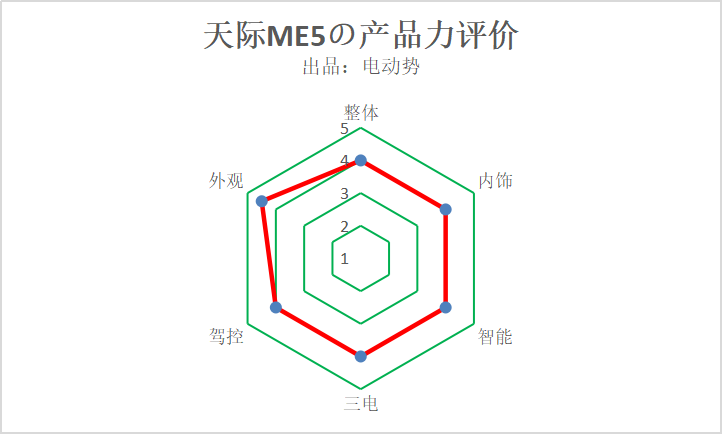 ## Exterior
## Exterior
The design details of the ME5 are well integrated, with the continuous front headlights combined with the Skyline logo, and the continuous taillights complementing the English name of Skyline. It has a bit of a Porsche feel and it is clear that the front and rear use a consistent design language, resulting in good overall design integrity.
Because it uses a pure electric platform, the ME5 looks more coordinated on the side compared to some oil-to-electric conversions, with no particularly abrupt areas. With the 21-inch wheels, it has a strong sense of sporty aesthetic. Overall, in terms of balancing efficiency and aesthetics, the designer leans towards the latter.
The dimensions of the ME5 are 4580mm in length, 1915mm in width, and 1635mm in height, with an ultra-long wheelbase of 2750mm.
Overall, I think the ME5’s exterior design does not have any obvious flaws, with strong originality and a sense of coherence. It is truly at the level of a master, and of course, this cannot be separated from the successful product development of Skyline Automobile. It is not easy for young new forces to achieve this level of design.
Interior
Currently, the most highly regarded interior among new energy vehicle models is undoubtedly the IDEAL ONE, but after experiencing the Skyline ME5, I feel that it is also quite good. If the IDEAL ONE is a 5 out of 5, then the Skyline ME5 can achieve 4 out of 5.
How did it get those 4 points? First, the ME5’s interior does not have particularly major shortcomings, which is actually very difficult for new energy vehicles to achieve. Second, in some key areas, the Skyline ME5 even has some surprising features.
Therefore, overall, the interior of the Skyline ME5 is still very good. Let’s discuss the details further.
For intelligent cars, the screen is the most prominent feature of the entire interior, or the core part, but the effect produced by each brand is not the same, and it can be easily experienced whether they put effort into it.
The Skyline ME5 adopts two screens. The first is a 10.25-inch high-definition full LCD screen, and the biggest feature of this screen is that it follows the direction of the steering wheel, which is the first time it has appeared in intelligent electric vehicles.
This design is very interesting. I took a short video and posted it on the Electric Power Video platform, which gained a lot of attention.“`markdown
After the popularization of LCD screens, they come in various shapes and sizes, and some brands, especially young new forces, have a generally insufficient human-machine engineering ability, which easily results in blind spots on the screen. The Skyworth ME5 solves this problem by making the screen follow the movement. Other brands can also learn from this.
As for the second screen, it is a 14.8-inch ultra-large 2k high-definition center console screen with a portrait design. Compared with the horizontal screen of its big brother ME7, it has been slightly adjusted.
The advantages and disadvantages of horizontal and vertical screens are different. The former has poor operability but good space for a secondary gauge cluster, while the latter has good operability but takes up space for a secondary gauge cluster and some models may have backlighting. This is subjective, but personally, I think the horizontal screen is better.
In terms of other details, it can be summarized as the level of atmosphere building, which is somewhat related to the brand tone.
Because the Skyworth brand is positioned towards the middle and high-end and has a hint of light luxury, even if it is a product worth 150,000 yuan, the ME5’s interior texture is still good, including pearl leather trim, round air vents, 256-color temperature-sensitive ambient lights, and integrated sports seats using laser-carving technology.
In addition, one thing worth mentioning is that the ignition switch of the Skyworth ME5 is located in the middle of the steering wheel, which is also an interesting design with a bit of a racing car feel.
The only drawback of using it for a few days is probably the functional buttons at the 3 o’clock position of the steering wheel, which are easily touched by the right thumb while driving and may accidentally activate the function, which affects the driving experience. I hope there will be some adjustments in the updated version.
Overall, similar to its exterior, the interior design of the ME5 is very cohesive, and the human-machine engineering level is also very good. The dynamic gauge, ignition switch, and other designs have even brought some surprises, indicating that the Skyworth engineers have put a lot of thought into the interior layout.
Intelligence
As for intelligent electric vehicles, intelligence is one of the important product strengths. Regarding the Skyworth ME5, this part can be discussed from static to dynamic.
First of all, in terms of layout, the ME5 is equipped with two screens, which have been introduced above, so I won’t go into details again. Another important layout is the start of the auxiliary driving. It is set as a gear lever switching method, located below the left side of the steering wheel stalk, which is a little unexpected.

“`Some new players, such as Weixiaoli and others, set the start of the auxiliary driving function on the right gear lever, while most traditional brand cars still use a button start method. This reflects different design logics. In simple terms, the button start is the logic of oil cars, while the gear lever start is more based on the user experience of intelligent electric vehicles.
The experience of the two layout methods is quite different. For example, if you use the gear lever to start the auxiliary driving function, you may just need to dial it once with only one action, but the button start requires several buttons to be pressed and multiple actions to be performed, making it more cumbersome. As for ending the program, both require only one action. When assisted driving becomes a high-frequency application, the former is undoubtedly the trend.
Personally, I prefer the gear lever style, which is very handy. Of course, the ability to make such changes in the layout and the adjustment of design thinking is not easy. Skywell Automobile gives people the impression of being somewhat traditional, but in terms of product experience, they can keep up with the times, which is quite good.
Looking at the center console, compared to the luxurious screen configuration of ME7, the ME5’s screen takes a practical route for home use. In terms of experience, overall ease of use is the main feature. The car’s logic is very clear, and there are no problems with fluency. High-frequency applications are set in the most user-friendly locations, and even a row of physical buttons are arranged. The high-performance Qualcomm 820A Premier SoC is used.
In terms of intelligent driving experience, ME5 is equipped with an L2+ assisted driving system, automatic parking + remote parking, and 360-degree real-world views.
I tested the L2+ assisted driving system, and the program stability and lane centering performance are very good, better than the performance of Little Penguin P5’s LCC that I tested during the Spring Festival, which is somewhat beyond my expectations.
As for voice aspects, commonly used functions can be achieved, and interruptions are supported.
To sum it up, whether it’s the hardware setup of intelligent driving, software experience, or the experience of the center console screen, I think ME5 has done a good job, and it deserves a score of 4.
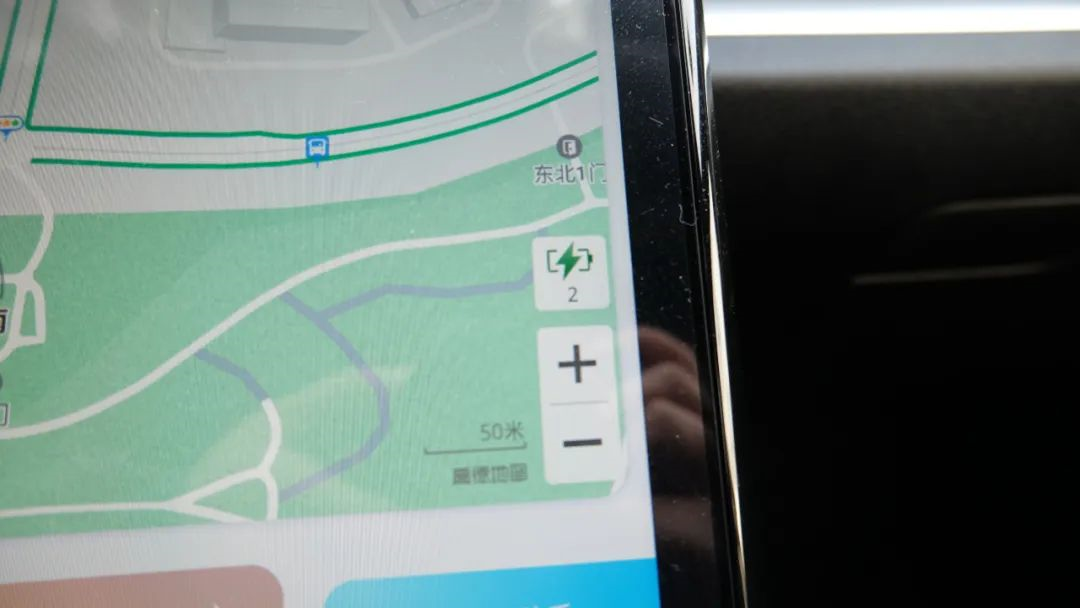
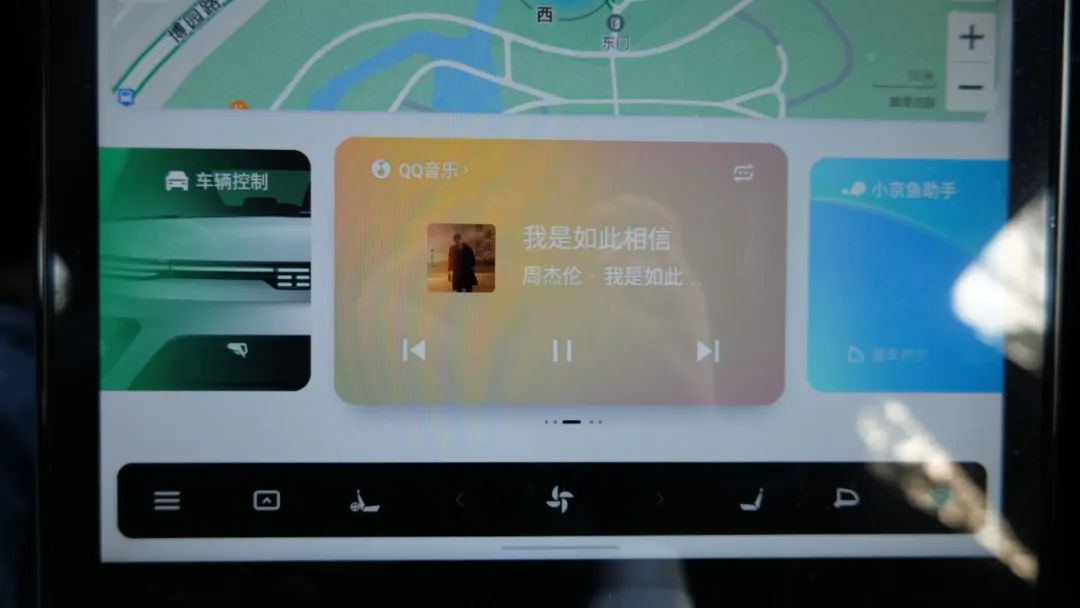
Three Electric Systems
The three electric systems are the biggest product features of ME5, using the smart extended-range system called iMES.
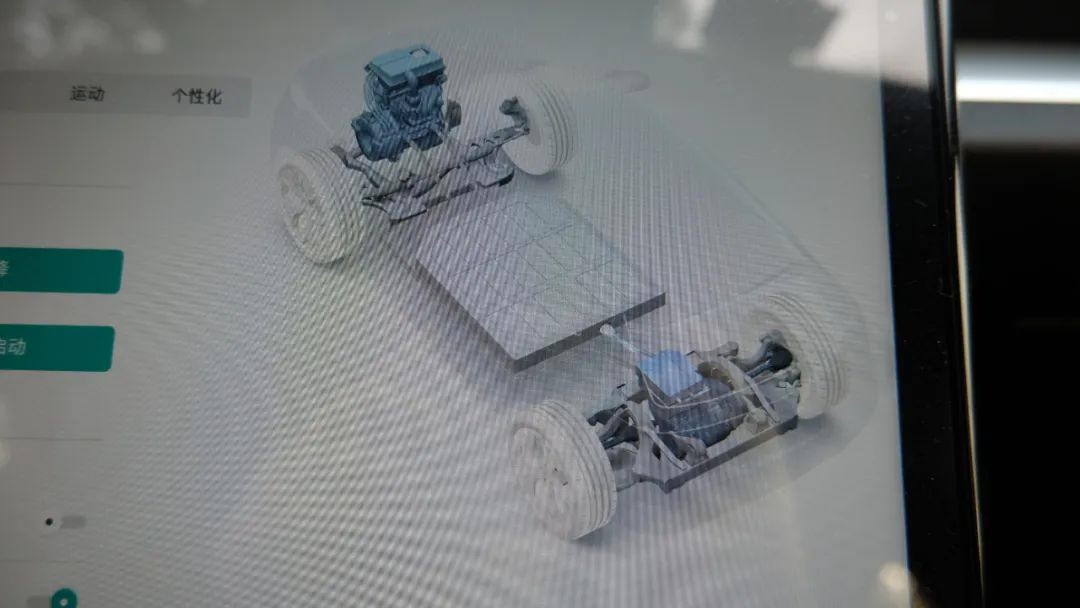
First, let’s look at the technical status. The ME5’s range extender is a 1.5-liter four-cylinder naturally aspirated engine with a maximum output of 72 kilowatts and 98 horsepower, which is sufficient to meet the power requirements of high-speed cruising.Here is the English version of the Markdown text, preserving the original HTML tags:
It should be noted that for extended-range or hybrid vehicles, the horsepower of the engine is not better the higher it is, but the more efficient it is while maintaining the required power.
According to DianDongshi, the ME5’s range extender is sourced from Dong’an, just like the Ideal ONE, but with differences between a 1.2T three-cylinder and a 1.5L four-cylinder, the latter of which generally provides better driving experience.
After adding the driving motor, the ME5’s “engine” has a maximum output of 150 kW and 310 Nm, which is equivalent to mainstream intelligent electric vehicle parameters.
In addition to using a four-cylinder engine, the most significant technical feature of the ME5 range extender is adopting the world’s first flywheel rotor integrated design. In short, the flywheel of the engine is the rotor of the generator. Isn’t that imaginative? If there is a chance later, further analysis of this technology can be done.
It is precisely because of this structure that the ME5 can achieve “range extension direct drive,” that is, the power generated by the range extender is directly driven by the driving motor, without being stored in the battery, then from the battery to the driving motor, avoiding energy loss twice and battery degradation.
Therefore, energy-saving and fuel-efficient are significant features of the ME5. It is reported that the minimum fuel consumption for the ME5 is 4.9L/100km, which is much lower than the Ideal ONE’s 8.8L/100km.
According to my own test, the fuel consumption rate of the ME5 is 5.5L/100km, basically reaching the level of the most potent domestic hybrid of independent brands. This demonstrates the power and potential of this range extension system. Further research could make it comparable to Japanese hybrids.
As for power consumption, it is about the same level as pure electric SUVs of the same class, at about 15 kWh/100 km (officially 15.6 kWh/100 km).
For hybrid vehicles, the fuel and electricity consumption rate varies greatly. You can have full fuel consumption, full electric consumption, or a middle state. Taking the car I test drove as an example, after traveling 2071.2 kilometers, the average power consumption data is: 13.6 liters/100 km of electricity and 1.2 liters/100 km of fuel consumption, which is still relatively fuel-efficient overall.
In terms of driving performance, although the interior and exterior design has some sports elements, the ME5 is primarily intended for home use.
First, let’s look at the basic parameters. The 0-100 km/h acceleration time is 8.9 seconds, the 100-0 km/h braking distance is only 33.9 meters, and the turning diameter is 10.9 meters, approaching an ideal 50:50 front-to-rear weight distribution (with the front range extender and rear driving motor), and a suspension configuration of front MacPherson and rear H-arm multilink.

 # Markdown Translation
# Markdown Translation
Compared to other electric cars of the same level, the Sky ME5 is leading in all aspects except for acceleration parameters.
In terms of actual driving experience, the ME5 accelerates well at medium and low speeds, with a maximum torque of 310 Nm, highest among its peers. As a family car, the braking, steering, and chassis performance is good overall and without any sudden or jarring moments, much like a German car maybe?
Electric Power Has Something to Say
Intelligent range extender electric cars have gradually been accepted by the public, and here are a few reasons why:
Firstly, the product form has undergone subtle changes, which, with the blessing of intelligence, has transformed range extender electric cars into intelligent range extender electric cars. Consumers are paying less attention to traditional hardware such as engines and transmissions and have more demand for intelligent cabins and intelligent driving.
Secondly, technology features have been upgraded. The development of power battery technology has made it possible for a large battery pack to have an extended range, thus weakening the technical depth of range extenders. The electric power is strengthened, enabling the car to switch freely between gasoline and electricity, breaking through the scenario limitations. With its more than 100 km pure electric cruising range, it is more practical than traditional plug-in hybrids that only have a few tens of km cruising range, particularly in Beijing, Shanghai, Guangzhou, and other cities where there is a big radius of daily activity.
Thirdly, there has been a change in marketing channels. The previous marketing path for car manufacturers was 4S stores to consumers, which has been replaced by manufacturers directly marketing to consumers. This marketing method has also broken brand rigidity, making it easier for new brands to achieve basic sales as long as they provide good service.
Fourthly, new forces are emerging. In the Chinese automobile market, every few years brings forth a group of car manufacturers contributing fresh blood to the market. Compared to previous brands, these new forces are more independent, richer, more knowledgeable about cars and users. Under their capable leadership, the market and traditional patterns have been broken.
Based on these reasons, the range extender market still has plenty of room for growth.
Today, with further reductions in new energy subsidies, rising battery prices, and the full unlocking of the potential of hybrid cars, the iMAS intelligent-range-extender system on the Sky ME5 is almost on par with the BYD dmi hybrid in terms of efficiency rankings, and even performs better.
At the delivery ceremony of the Wanjie M5, a user told me that the reason they chose a range extender car is that it is not cost-effective to buy a gasoline car in Shanghai, the cruising range of an electric car is insufficient for high speed driving, and the structure of dual-motor hybrid cars is more complex, which means the fault rate is relatively high. Therefore, it can be said that range extender electric cars are currently the most reasonable choice.
In the range extender market, the technical problems have been solved, and marketing has made great improvements. The biggest gap is now in the product itself.
The Sky ME5 test drive, with a price ranging between RMB 149,900 and RMB 159,900, is the cheapest intelligent-range-extender electric car that consumers can currently purchase.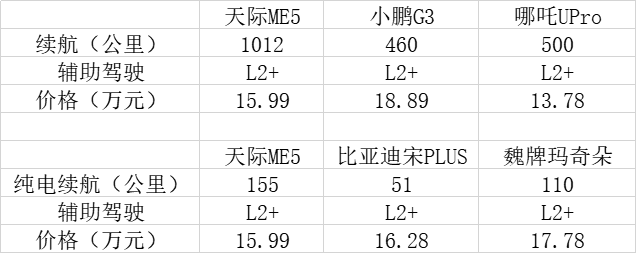
As for product strength, compared to other electric vehicles in the same category, ME5 can still enjoy a green license plate in Shanghai this year (to be cancelled next year). In addition, its comprehensive range of 1012 kilometers is a great advantage, as it can be powered by both fuel and electricity. Compared to other hybrid vehicles with dual motors in the same class, ME5 has a simpler and more efficient power structure, and has the same price with higher intelligent configuration.
As one of the most powerful competitors in the 150,000 yuan price range of smart electric vehicles, Skywell ME5 stands out.
This article is a translation by ChatGPT of a Chinese report from 42HOW. If you have any questions about it, please email bd@42how.com.
